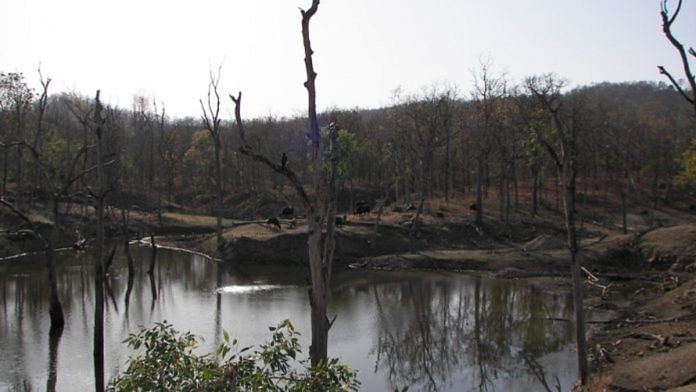New Delhi: Nearly two months after suggesting a uniform 2 per cent fee be levied on projects inside eco-sensitive zones (ESZ), the National Board for Wildlife (NBWL)’s Standing Committee has decided to roll back its proposition.
It has now proposed to seek “measures to mitigate impacts of projects in protected areas and eco-sensitive zones” as “part of project proposals”.
During a meeting held on 7 August, the NBWL panel had recommended fining agencies with a flat 2 per cent fee for projects falling inside ESZs, national parks, sanctuaries, tiger reserves and tiger corridors, “for mitigation of impacts due to developmental activities”.
The suggestion was made by panel member R. Sukumar, who reasoned that states had been imposing their own fines on projects inside ESZs.
“He also suggested that before any change in policy is adopted there should be analysis of the cost imposed and mitigation measures taken based on the experience of States/UTs,” according to the minutes of the meeting.
However, on 24 September, in a meeting chaired by Union Environment Minister Bhupender Yadav, it was revealed that “the Ministry is of the view that instead of imposing a uniform cost on all projects, it would be more appropriate if mitigation measures are suggested by the Chief Wild Life Wardens for each project”.
In its final recommendation, the NBWL panel said that instead of imposing a fixed cost, “mitigation measures and costs associated with such measures will be prescribed while recommending project proposals”.
“It was also decided that the Ministry will issue an advisory to all States/UTs in this regard,” it added.
The NBWL is the apex decision making body responsible for all wildlife matters, and is responsible for the promotion of wildlife conservation and the development of wildlife and forests.
The Standing Committee of the board is tasked with regulating land diversion within protected areas and eco-sensitive zones.
Also read: Here’s how to build sustainable, healthier, more equitable food systems: WEF founder
‘Examine reasonability’
According to the minutes of the meeting held on 24 September, expert members R. Sukumar and H.S. Singh suggested making guidelines for imposing costs on user agencies as a mitigation measure.
However, Ministry of Environment, Forest and Climate Change Secretary R.P. Gupta said the standing committee “should examine the reasonability of the proposed mitigation measures and should not recommend any project without mitigation measures”.
“As regards the guidelines on mitigation measures, he noted that it would be difficult to prescribe guidelines on mitigation measures since such measures would vary from one project to another,” the minutes said.
Environment Minister Bhupender Yadav observed that “project proposals should be scrutinised with objectivity within a strict time-frame”.
“He said that there should be clarity regarding implementation of decisions and accountability of those implementing decisions.”
‘Such measures don’t ensure protection of wildlife’
Experts have pointed out that the NBWL’s decision to impose costs on agencies seeking to work inside protected areas and sensitive zones runs counter to some of the provisions in the Wildlife Conservation Act.
More specifically, sections 29 and 35 of the Act state wildlife and their habitats within sanctuaries and national parks should not be destroyed, exploited, or damaged unless the chief wildlife warden and state government feels it is “necessary for the improvement and better management of wildlife”.
“Earlier the NBWL took a position that 2 per cent cost would be charged, and that decision has been revised to say that the cost will keep it flexible based on mitigation measures proposed. The more fundamental issue that the proposals have to stand scrutiny that they will allow for the improvement and better management of wildlife. Introducing mitigation measures for work inside protected areas and eco-sensitive zones is neither legal nor an assurance that the activity will ensure the protection of wildlife,” said Kanchi Kohli, senior fellow with the Centre for Policy Research.
Nitin Pandit, chief executive officer, Ashoka Trust for Research in Ecology and the Environment (ATREE), said mitigation measures in the past should be assessed against their effects on the environment.
“More than future measures for mitigation, it’s important to assess what the compliance with mitigation measures for project proponents has been in the past,” he said. “If a project proponent comes in to restore an area, in such a case that’s good to see. But if the project goes against the spirit of conservation, one would need to look at that carefully.”
Also read: How COP26 can make up for the failure of 25 previous conferences to tackle climate change






